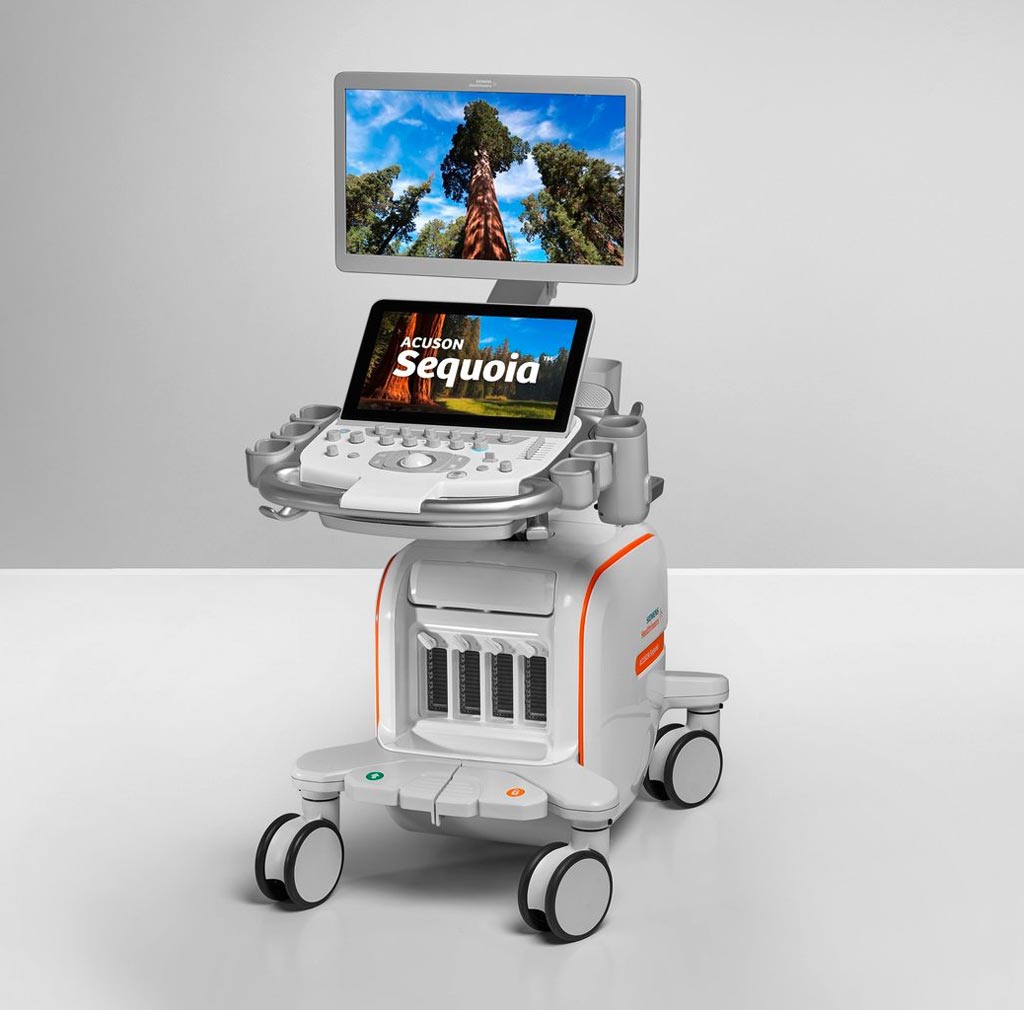New Ultrasound System Enhances User Experience
By MedImaging International staff writers
Posted on 03 Oct 2018
User-friendly features such as gesture detecting transducers, automated protocols, and streamlined registration enhance workflow and personalize ultrasound imaging.Posted on 03 Oct 2018
The entirely new Siemens Healthineers (Erlangen, Germany) Acuson Sequoia ultrasound system is designed to adapt to characteristic bioacoustic variations of each patient, including tissue density, stiffness, and absorption. Patients with more adipose tissue are more difficult to image; the deeper an echo signal needs to penetrate, the more attenuation occurs, resulting in image quality degradation. In attempting to overcome these challenges, clinicians have traditionally had to compromise on frame rates, resolution, or penetration of their ultrasound imaging.

Image: The Acuson Sequoia is designed to adapt to variations of each patient (Photo courtesy of Siemens Healthineers).
Acuson Sequoia, on the other hand, allows the imaging of different sized patients with consistency and clarity. Users can select the image that best matches the patient’s bioacoustic characteristics, avoiding manual adjustment of multiple individual image parameters. In addition, Acuson Sequoia provides high-resolution InFocus imaging throughout the entire field of view, from the near field to the far field, in real-time. There is therefore no need to adjust the focal point of the scan, resulting in faster scan time without compromising frame rates and resolution.
The system also introduces a new, ergonomically designed family of transducers designed to reduce operator stress, such as a deep abdominal transducer (DAX) that exploits elastography and contrast-enhanced ultrasound (CEUS) software updates to allow penetration of up to 40 cm without the image quality degradation caused by attenuating echo signals. Other features include high resolution color flow, up to three times the sensitivity, and a six times energy capacity for shear wave elastography, enabling imaging at greater depths and a reduction in image variability.
“Ultrasound imaging has been plagued by variability. Patients’ varied physical characteristics and user-dependent variabilities can impact a clinician’s ability to deliver an accurate diagnosis,” said Robert Thompson, head of ultrasound at Siemens Healthineers. “With the new Acuson Sequoia, Siemens Healthineers provides users with a solution that enables real-time imaging for varying patient types, including those with high BMI, without sacrificing image quality and potentially reducing the need for repeat scans and unclear diagnoses.”
According to the World Health Organization (WHO; Geneva, Switzerland), 1.9 billion people globally are reported as overweight, with 650 million classified as obese, with a body mass index (BMI) above 30. Besides the echographic challenges of imaging through fatty tissues, obesity challenges the staff itself, including moving the patients onto the scanner tables, positioning them, or turning them during an ultrasound.














